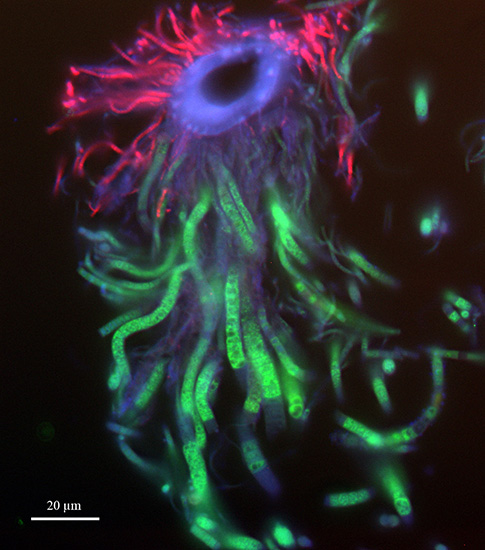Symbiosis in the deep sea
- On 23/07/2012
- In Marine Sciences
- 0 comments

From Oceanus
Scientists discover how bacteria living with shrimp make a living.
Mobs of pale shrimp clamber over each other, jockeying for position in the swirling flow of black-smoker vents on the seafloor where ultra-hot fluids from Earth’s interior meet cold seawater.
The shrimp, Rimicaris exoculata, are not the only animals that live near these vents on the Mid-Atlantic Ridge, the volcanic seafloor mountain range that bisects the ocean basin.
But they are by far the most abundant, with population densities reaching 3,000 individuals per square meter.
Though numerous and known to science since 1986, how they make their living is still a mystery.
At first, scientists thought they grazed on bacteria that grow on the chimney-like walls of the vents, which spew dark, chemical-rich fluids into the ocean.
Then, in the 1990s, a novel kind of bacterium was found living in the shrimps’ gill chambers.
That finding raised the possibility that Rimicaris relies on symbiotic relationships with bacteria, which, in turn, need chemicals in the vent fluids to live.
But figuring out how two organisms interact requires more detailed knowledge than just seeing them together. What kinds of bacteria are present with the shrimp ?
What, if anything, do the bacteria and the shrimp provide to each other ? How do they do it ?
Add a comment